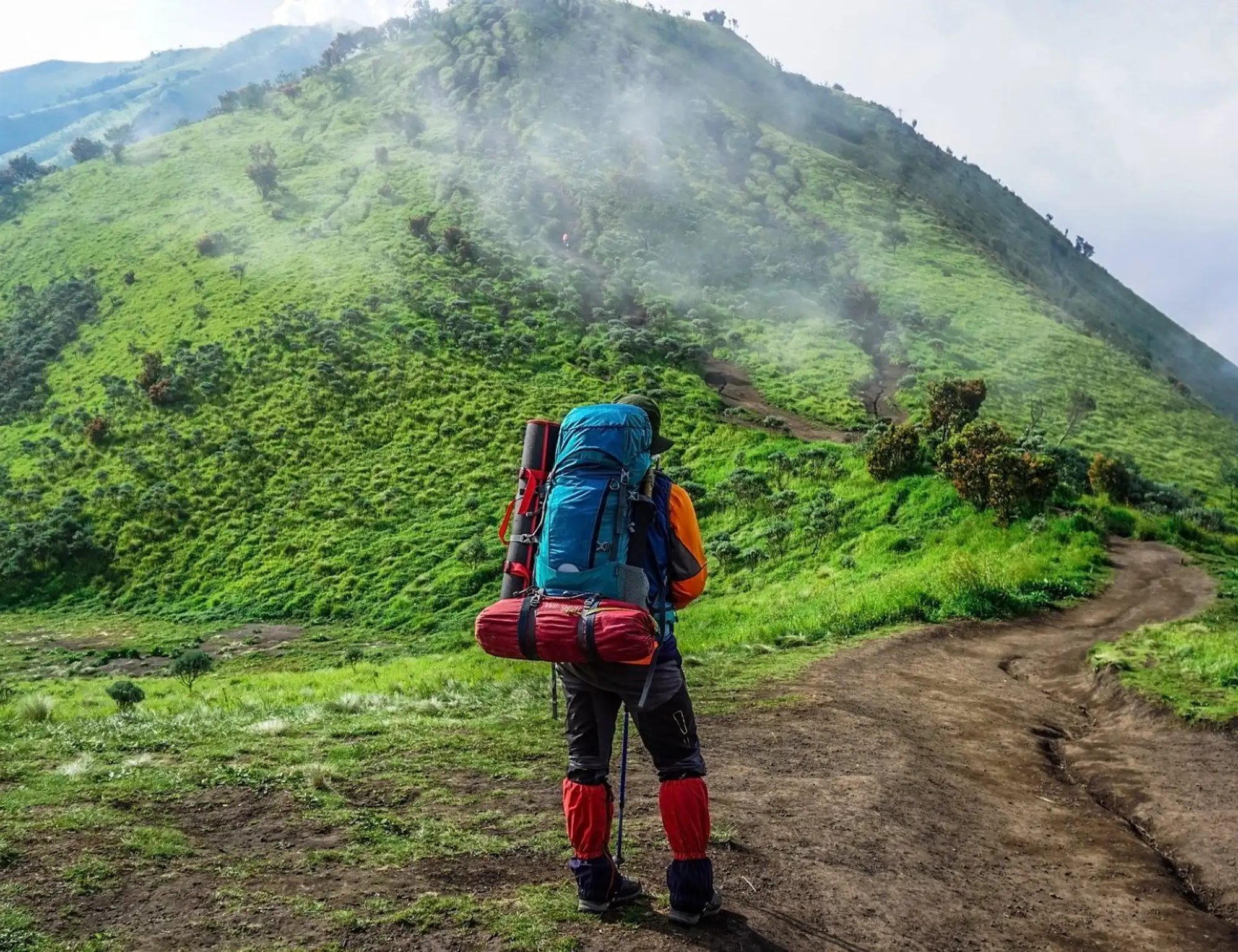Embrace the Soul of Bhutan
Embark on a journey through the heart of Bhutan with this tour that beautifully combines culture, nature, and light adventure. Beginning and ending in Paro, the route winds through the vibrant capital of Thimphu, the historic Punakha Valley, the pristine Phobjikha Valley, and the picturesque Haa Valley. Designed with a balance of sightseeing and easy hiking, the itinerary ensures comfort, accessibility, and memorable encounters at every step.
During the journey, you get an opportunity to immerse yourelf in Bhutan’s traditions through monastery visits, cultural interactions, and unique experiences like farmhouse stays. From the world-renowned Tiger’s Nest Monastery to hidden rural gems, the journey offers countless opportunities for exploration, reflection, and of course photography. With its seamless blend of iconic landmarks and offbeat discoveries, this itinerary captures the very essence of Bhutan, making it not just a trip but an enriching experience that lingers long after the journey ends.
Guided
casual hotels
Paro
Paro
moderate to challenging
0 km / 0 mi
1
Min. 2, Max. 14
Paro International Airport (PBH)
Paro International Airport (PBH)
Highlights
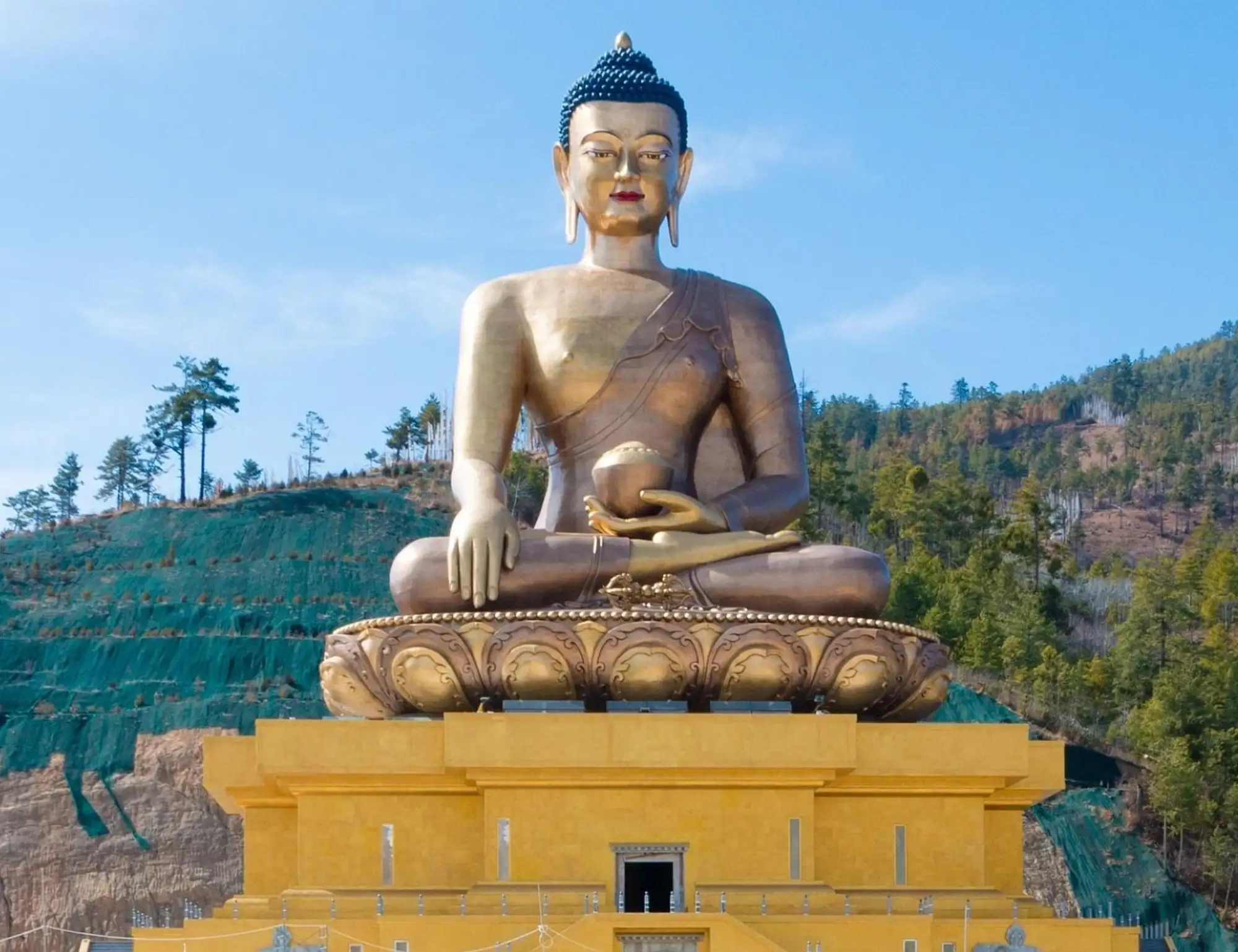
Spiritual Grandeur
Witness the towering 169 ft golden Buddha overlooking Thimphu valley, symbolizing peace and prosperity.
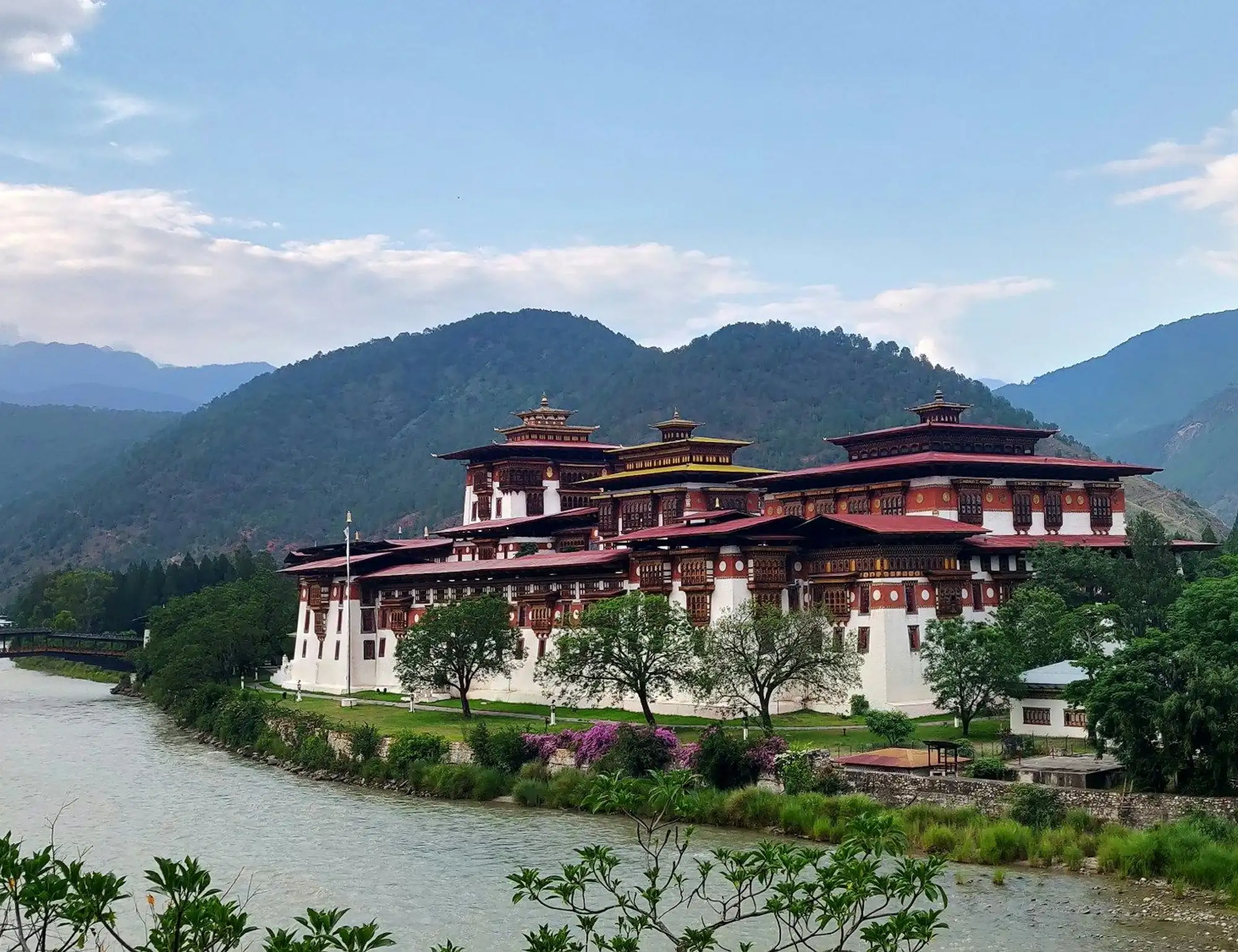
Architectural Jewel
Admire Bhutan’s most beautiful fortress, built at the confluence of two rivers with intricate woodwork and artistry.
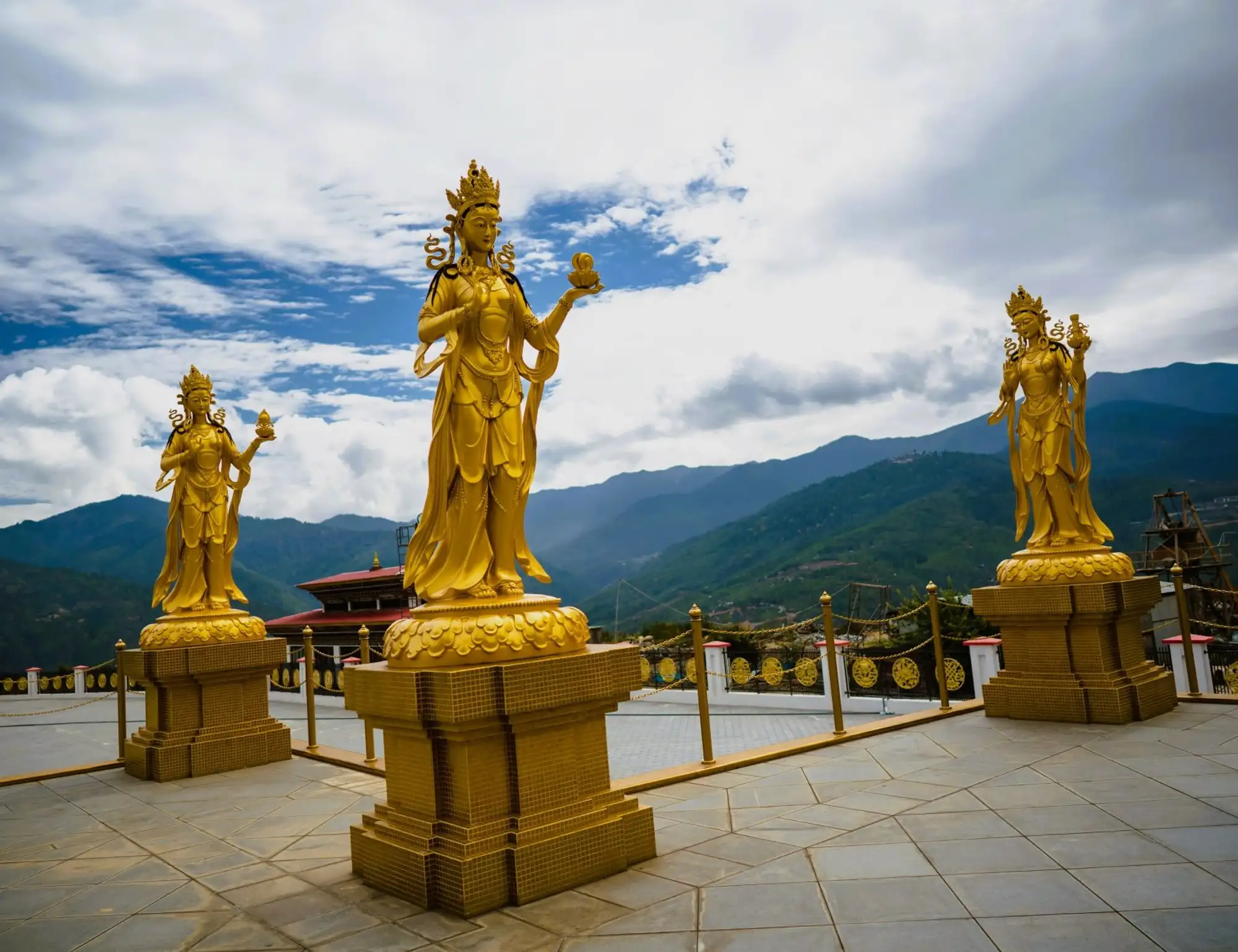
Golden Majesty at Buddha Dordenma
Marvel at the towering golden statue of Buddha Dordenma, a symbol of peace and prosperity, offering sweeping views of Thimphu Valley and the surrounding Himalayas.
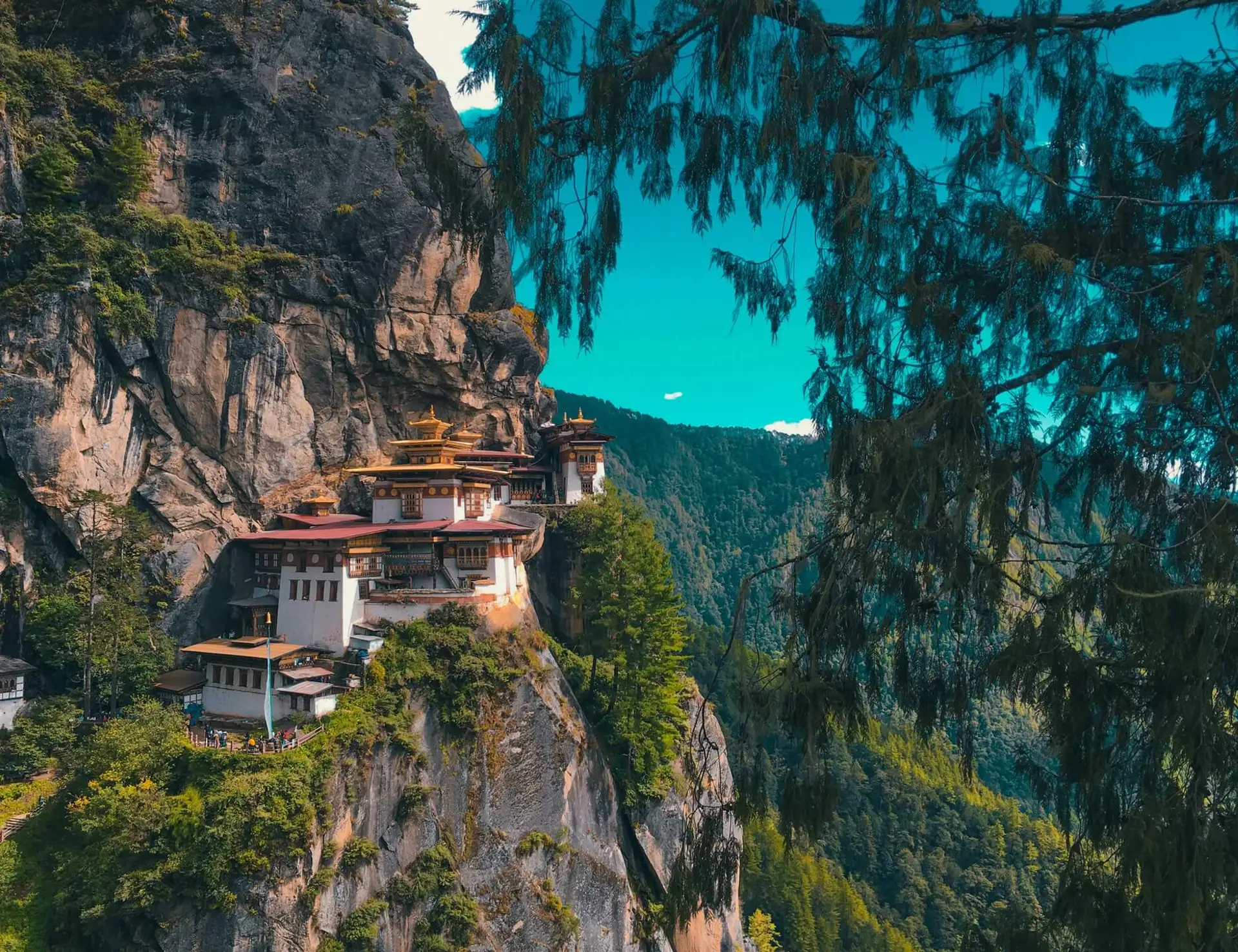
Tiger's nest
Hike to the awe-inspiring Tiger’s Nest Monastery, dramatically perched on a cliffside, where legends meet breathtaking views over the misty Paro Valley
Itinerary
Brief Itinerary
Meals are indicated as B = Breakfast, L = Lunch, D = Dinner.
Listed hotels are subject to availability and may be replaced with similar alternatives of equal standard.
| Day | Place | casual Inns | Meals | Distance | Activity |
|---|---|---|---|---|---|
| DAY 1 | Thimpu | Hotel Thimphu Towers (4-Star) r Pelyang Boutique (4-Star) | D | ||
| DAY 2 | Thimpu | Hotel Thimphu Towers (4-Star) or Pelyang Boutique (4-Star) | B L D | 6 km / 4 mi | hiking |
| DAY 3 | Punakha | Punatsangchhu Cottages (3-star) or Hotel Lobesa (3-star) | B L D | 7 km / 4 mi | hiking |
| DAY 4 | Phobjikha | Punatsangchhu Cottages (3-star) or Hotel Lobesa (3-star) | B L D | 6 km / 4 mi | hiking |
| DAY 5 | Phobjikha | Gakiling Guest House (3-star) or Dewachen Resort (3-star) | B L D | 4 km / 2 mi | hiking |
| DAY 6 | Haa | Ugyen Farm House (3-star) | B L D | 3 km / 2 mi | hiking |
| DAY 7 | Haa | Ugyen Farm House (3-star) | B L D | 8 km / 5 mi | hiking |
| DAY 8 | Paro | Bhutan Mandala Resort (3-star) or Gawaling Hotel (3-star)Bhutan Mandala Resort (3-star) or Gawaling Hotel (3-star) | B L D | ||
| DAY 9 | Paro | Bhutan Mandala Resort (3-star) or Gawaling Hotel (3-star) | B L D | ||
| DAY 10 | cycling |
Detailed Itinerary
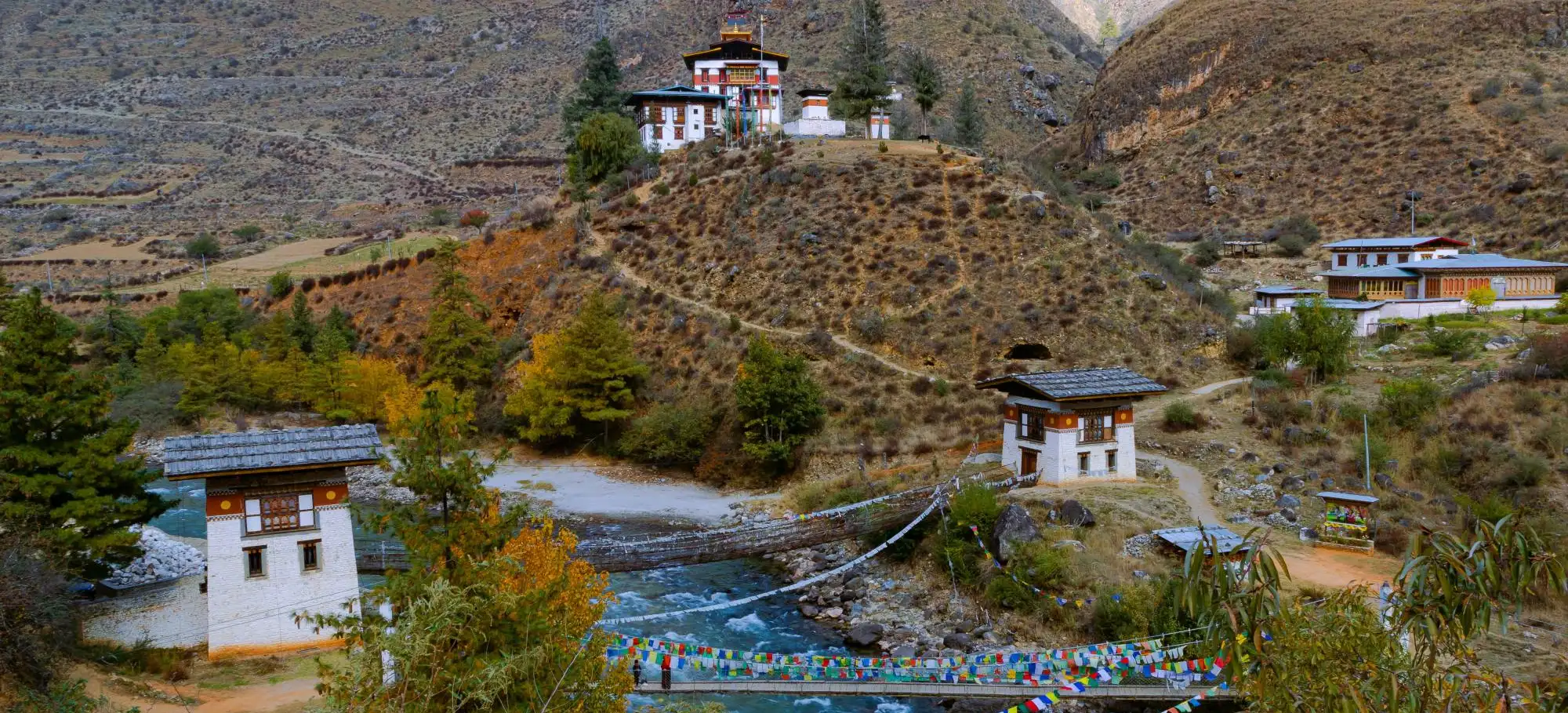
Day 1: Thimpu
At Paro International Airport, you will be greeted by your professional guide and driven to Thimphu, the capital city. The one-hour journey includes a stop at Tamchog Lhakhang Monastery, where you can admire the reconstructed 13th-century iron bridge and enjoy the crisp mountain air.
On arrival in Thimphu, you will check into your hotel and take some rest before heading out in the evening. If time permits, you will visit the National Memorial Chorten, built in honor of Bhutan’s third king, followed by the Royal Takin Preserve, dedicated to Bhutan’s national animal and steeped in folklore.
The day concludes with a welcome dinner of authentic Bhutanese cuisine at a local restaurant, with the option to explore Thimphu’s lively nightlife, including cozy bars, live music, and craft beers.
Drive time: 1 hour
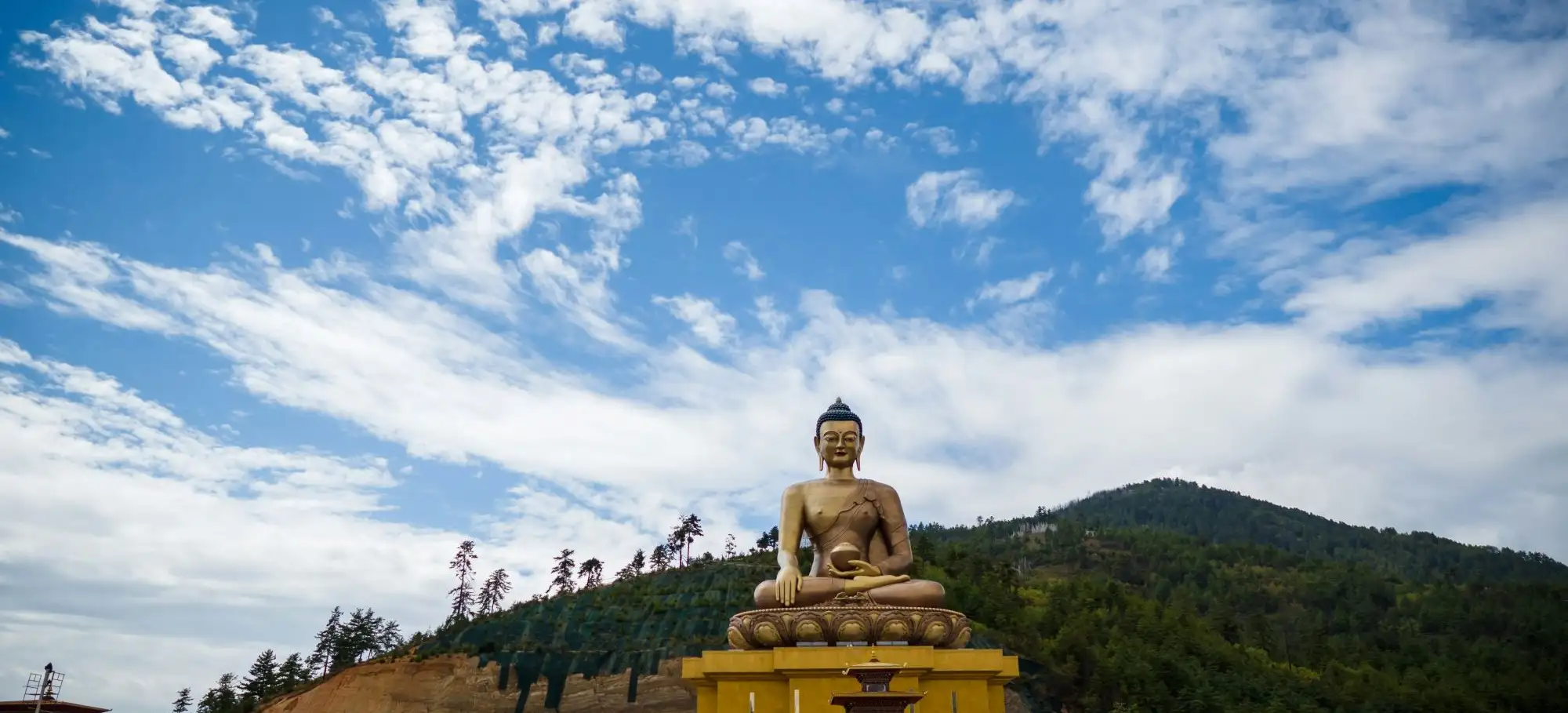
Day 2: Thimpu
After breakfast, begin your day with a drive to Kuensel Phodrang, home to the iconic 169-ft Buddha Dordenma statue overlooking the valley. From here, enjoy sweeping views of Thimphu city before setting off on a refreshing 6 km nature hike that leads to Changangkha Temple, a serene 12th-century temple perched on a ridge. This gentle walk is a perfect way to stretch your legs and ease into Bhutan’s hiking culture.
Head back to town for lunch at one of Thimphu’s popular cafés, where you can savour healthy meals while observing the relaxed lifestyle of Bhutan’s urban residents. In the afternoon, explore some of the capital’s cultural treasures: the Folk Heritage Museum, a preserved 19th-century farmhouse offering insight into traditional Bhutanese life, and the Royal Textile Academy, which showcases exquisite handwoven textiles and the artistry of local weavers.
Later, stroll along the Crafts Bazaar, a lively street market featuring handicrafts and textiles made entirely in Bhutan. If it’s the weekend, we’ll also visit the Centennial Farmers Market and Kaja Thorm market, where locals gather to buy fresh produce and regional specialties, offering you an authentic glimpse into Bhutanese daily life.
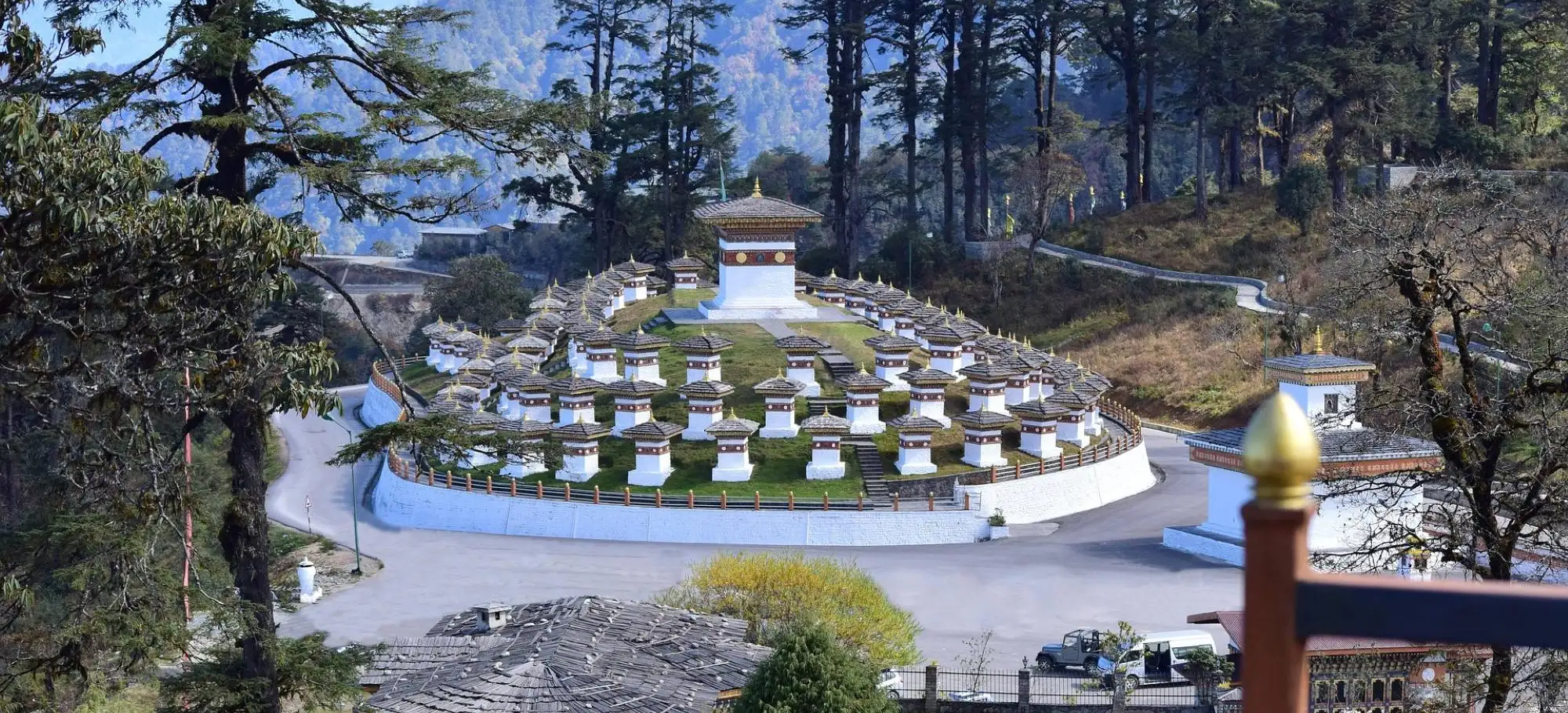
Day 3: Punakha
After an early breakfast, you will drive for about an hour to Dochula Pass (3140m), where hikers are greeted with panoramic views of the Himalayan ranges that mark Bhutan’s northern border. At the top, surrounded by fluttering prayer flags, stands the Druk Wangyal Chortens – 108 stupas built in honor of the Fourth King.
From here, begin your hike on the Trans-Bhutan Trail, descending through old rhododendron forests to Lamperi Botanical Park and then on to Thinleygang village. This stretch, known as the Mad-man trail, follows in the footsteps of the 14th-century monk Drukpa Kunley, the “Divine Madman,” famous for his unconventional practice of Buddha Dharma.
Continue descending to Toeb Chandana village, where a picnic lunch will be served near the stupas. The trail then winds through pine forests to Sew Drangsa village, a traditional resting spot for Bhutan’s monastic body during seasonal migrations.
Later, drive down to the scenic rice valley of Lobesa. Here you will visit the Chhimi Lhakhang, also called the Fertility Monastery, dedicated to Drukpa Kunley. The short hike to the temple passes through a beautiful village and lush paddy fields. To end the day, you will meet a local artist who will give a live demonstration of traditional Thangka painting.
Elevation Gain: Descending from Dochula Pass (3140m) to valley (~1200–1300m in Punakha)
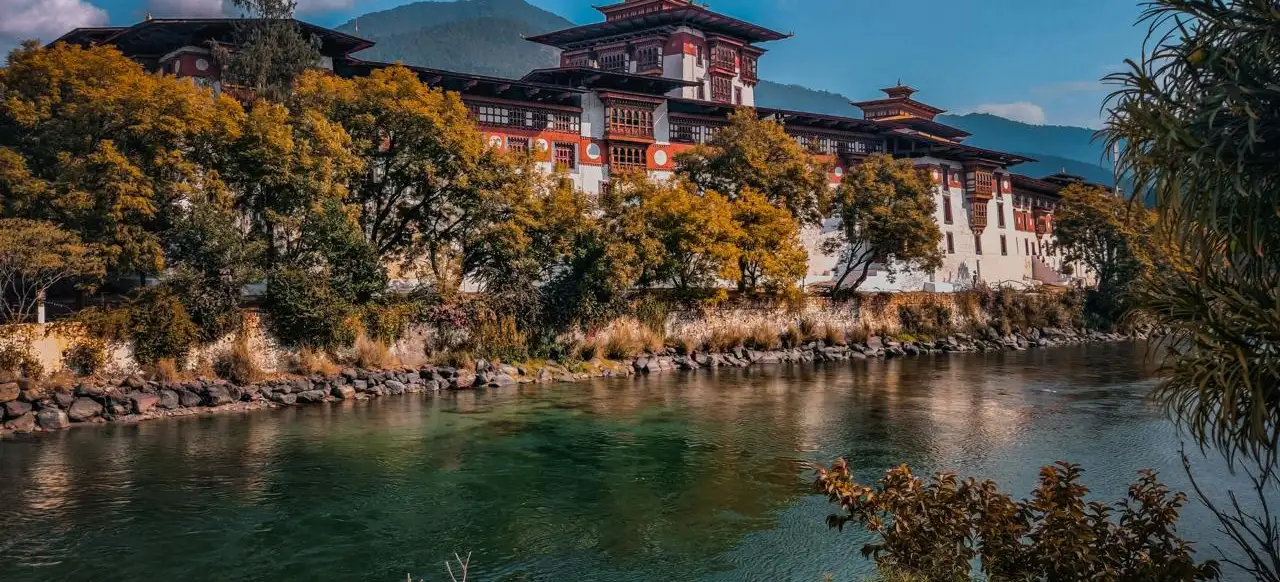
Day 4: Phobjikha
Your day begins with sightseeing combined with easy day hikes. You will drive to Kabesa Valley to visit the Khamsum Yuelley Namgyal Stupa, which requires a scenic 45-minute hike through paddy fields to the hilltop. From here, admire the majestic valley views and explore this unique masterpiece of Bhutanese architecture. From this point, you may also opt for another rewarding hike, starting from the riverside and crossing a suspension bridge to the opposite side of the Mo Chu River. A picnic lunch will be served on the banks of the Punakha River, where you may also witness locals enjoying archery, Bhutan’s national sport.
In the afternoon, visit the magnificent Punakha Dzong, considered the most beautiful fortress in Bhutan. Standing at the confluence of two rivers, it serves as the winter residence of the monastic order’s leadership and the administrative center of Punakha. With an expert guide, you’ll learn about the fortress’s art, architecture, and history. Later, proceed to the Sangchhen Dorji Lhuendrup Lhakhang Nunnery, perched atop a ridge among pine trees with sweeping views of the valleys. Here, you’ll have the chance to interact with the nuns, who are always eager to converse in English and share their perspectives.
Elevation Gain: 3000m
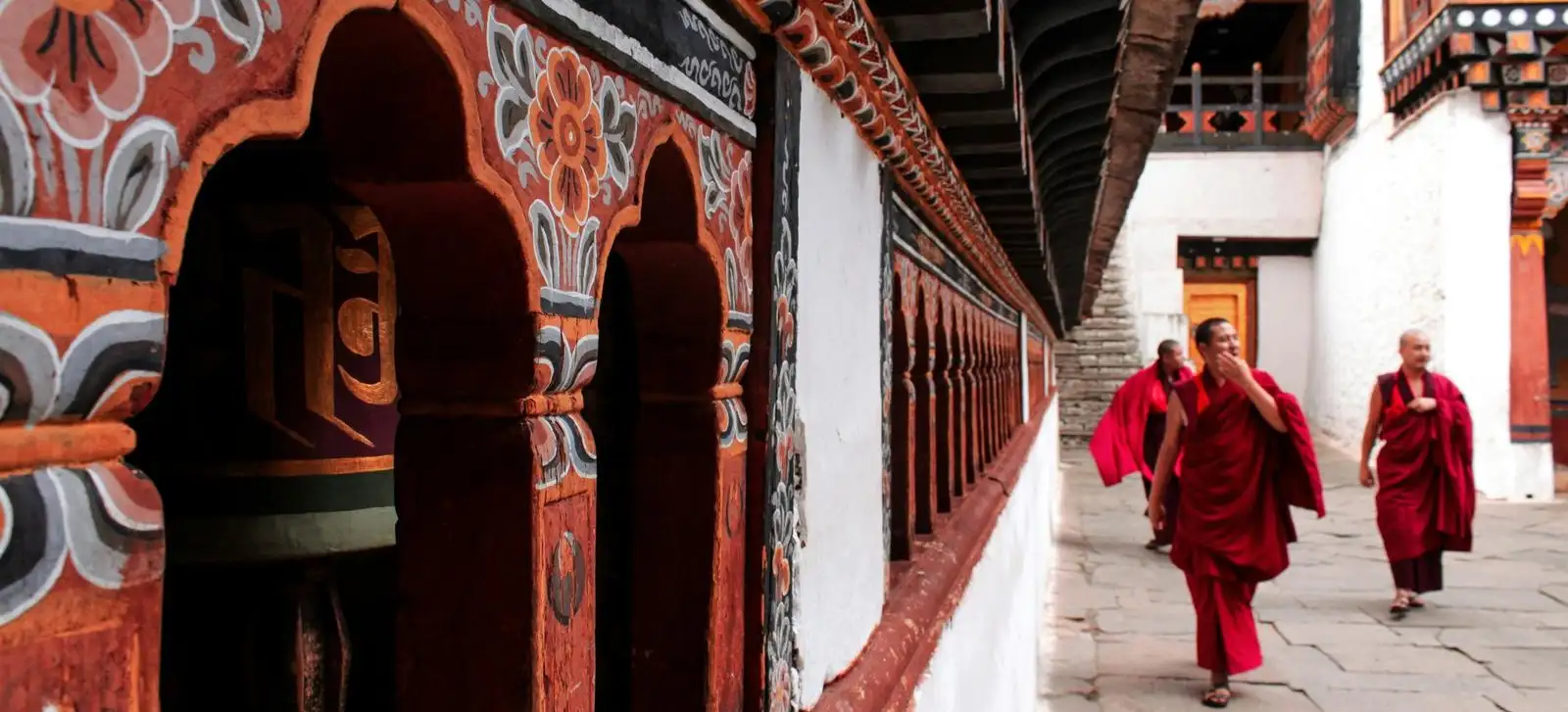
Day 5: Phobjikha
After breakfast, begin a scenic drive toward Phobjikha Valley (Gangtey). The highway follows the Dang Chuu River, winding through bamboo and oak forests. Just before crossing Pele La Pass, a side road leads into the hidden valley, famously called “Switzerland of the East.”
At the pass, embark on an exclusive hike along the ridges, offering stunning views of the valley. This easy descending trail of about 6 km leads to Gangtey Gompa monastery. Phobjikha is a glacial valley, home to the endangered Black-necked cranes in winter, and also serves as Bhutan’s potato basket, blending agriculture with wildlife conservation.
In the afternoon, visit the Black-necked Crane Information Centre to learn about the species and observe them through telescopes. Explore Kewang (Lhakhang) temple, hike around Phobjikha village, and interact with local farmers, including visits to some homes. Overnight stay in a beautiful resort with valley views.
Drive Time 3 hours
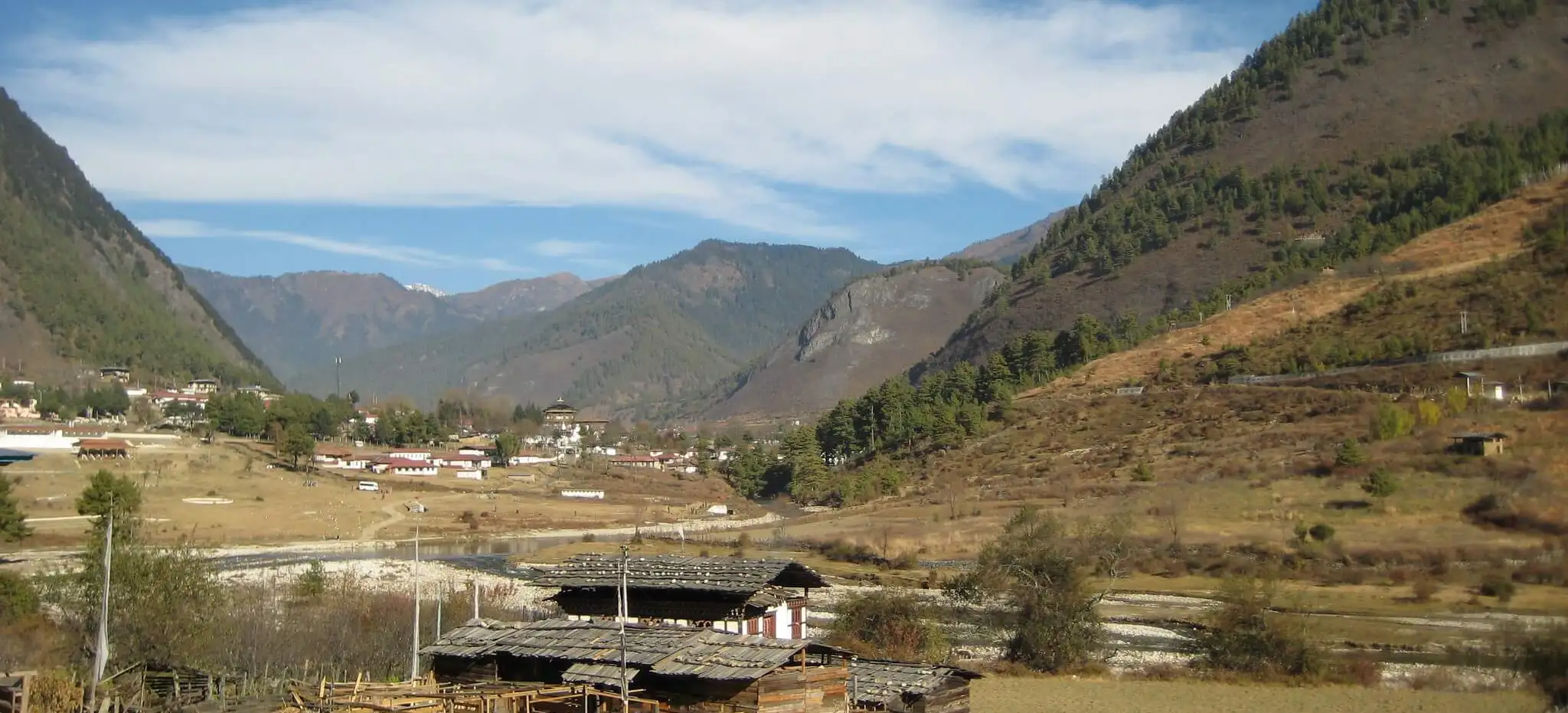
Day 6: Haa
After breakfast, drive to Haa Valley via Chelela Pass, embarking on a captivating day excursion through one of Bhutan’s hidden gems. The scenic drive winds along mountain roads, offering panoramic views of cascading waterfalls, verdant forests, and snow-capped peaks, with a perfect spot for a picnic lunch. From the pass, enjoy sweeping views over the valleys of Haa and Paro.
The journey continues through thick forests and alpine meadows, alive with birdsong and occasional sightings of grazing yaks. Fluttering prayer flags, ancient trees, and vibrant landscapes add to the beauty as you descend into the valley. The scenery shifts gradually from high alpine terrain to the gentle rolling fields of Haa.
In the valley, discover quaint villages where locals greet you warmly. Stay overnight in a traditional farmhouse, experiencing ancient Bhutanese architecture, storytelling with your host, local snacks, and an authentic glimpse of Bhutanese rural life.
Drive time 5 hours

Day 7: Haa
After breakfast, set out to discover the beauty of the remote Haa Valley, one of Bhutan’s least-visited gems. The valley is dotted with traditional villages, terraced fields, and monasteries that offer an authentic glimpse of rural life. You will also have the option to go on a hike, with two trails catering to different preferences:
Option 1: Juneydrak Hermitage Hike This is the longer and more rewarding trek of the day, taking about 3 hours roundtrip. The trail covers roughly 1 km with an elevation gain of 350–400 m. It leads you through thick forests and prayer-flag-lined paths up to the Juneydrak Hermitage, a cliffside meditation site where Guru Rinpoche is said to have meditated. The views over the Haa Valley from the top are breathtaking.
Option 2: Katsho Goemba Hike This is a shorter and gentler alternative, taking about 1–1.5 hours roundtrip. The trail is around 1.5 km with an elevation gain of 150–200 m. The path winds through small villages and farmland before reaching Katsho Monastery (Goemba), where you can interact with monks and enjoy quiet valley views. It’s ideal for those preferring a lighter walk while still experiencing the spiritual ambiance of Haa.
Later, explore Haa town, interact with locals, and enjoy the serene atmosphere of this valley before returning to your accommodation.
Option 1: Juneydrak Hermitage Hike ~ Elevation Gain: 350–400 m Option 2: Katsho Goemba Hike ~ Elevation Gain: 150–200 m
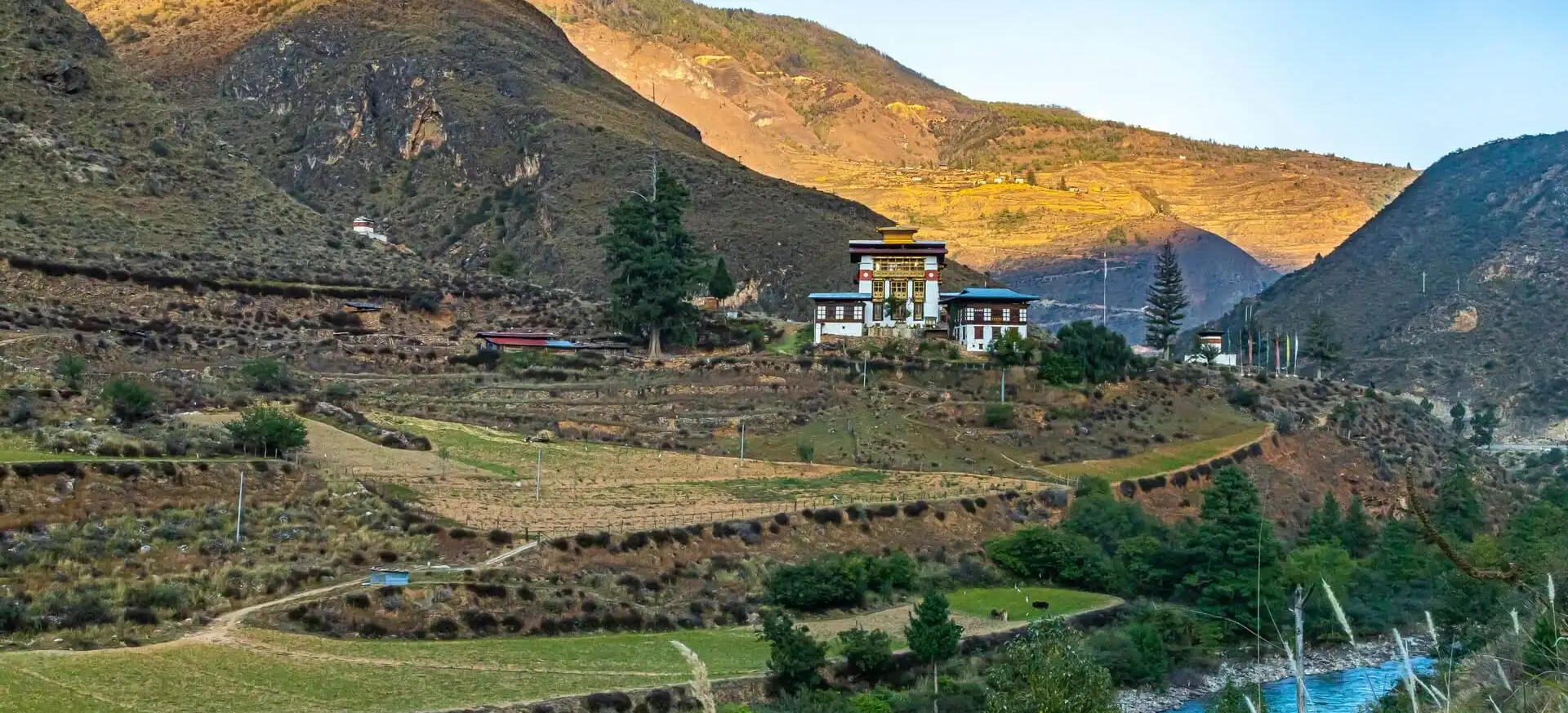
Day 8: Paro
After an early hike in Haa Valley, drive back to Paro via Chele La Pass, stopping along the way for scenic photo opportunities. En route, visit Kila Goenpa, a nunnery home to about 70 nuns, before continuing to Paro town.
On arrival, enjoy a leisurely day visiting Paro’s main attractions. Explore Rimpung Dzong, the “Fortress of the Heap of Jewels,” built in 1644 by Zhabdrung, and immerse yourself in Bhutanese culture at the National Museum, home to treasured collections of art, artifacts, textiles, stamps, and statues. Then, visit Kyichu Lhakhang, one of Bhutan’s oldest Buddhist temples, dating back to the 8th century.
In the evening, experience local life at a heritage farmhouse, enjoying traditional Paro cuisine and, optionally, a hot-stone bath. The drive from Haa to Paro takes approximately 2.5 hours, allowing for a relaxed scenic journey.
Drive time 2.5 hrs
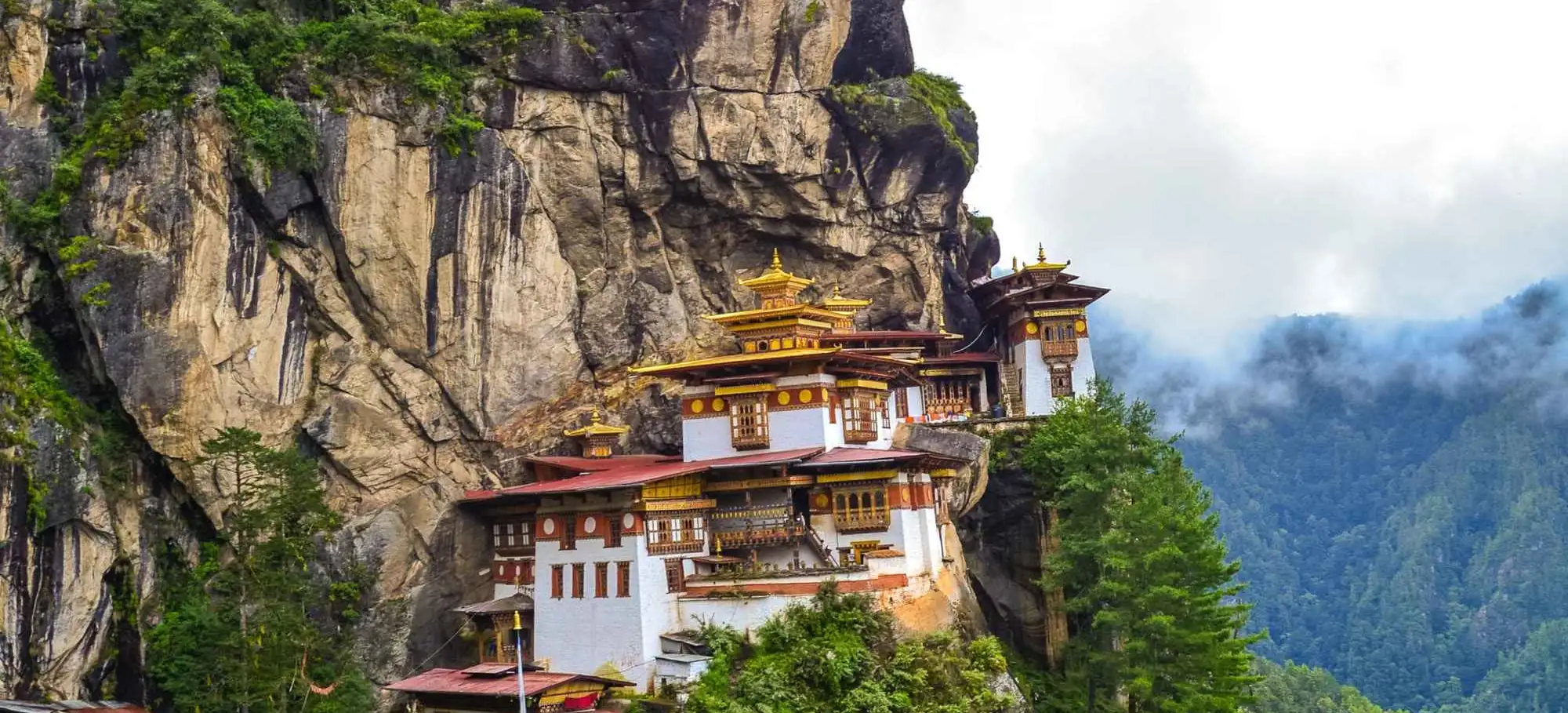
Day 9: Paro
Start your day early with breakfast before embarking on Bhutan’s most iconic hike – the trek to Taktshang Monastery, famously known as Tiger’s Nest. Perched on a cliff at 3,120 meters, this sacred monastery was built in 1692 and remains one of the most revered pilgrimage sites in Bhutan. The 4–5 hour round trip covers steep ascents but rewards you with breathtaking views of the Paro Valley, while your guide enriches the journey with fascinating legends and history.
In the evening, immerse yourself in Bhutanese culture by watching a traditional archery match, the national sport of Bhutan, filled with music and cheer. Later, visit a heritage farmhouse in Paro to enjoy a rejuvenating hot-stone bath and savor an authentic Bhutanese dinner prepared with local ingredients. This perfect blend of adventure, spirituality, and cultural warmth makes for a memorable finale to your Bhutan journey.

Day 10:
After breakfast at your hotel, your driver will transfer you to Paro International Airport for your onward journey. As you bid farewell to Bhutan, carry with you memories of its serene landscapes, sacred monasteries, and warm-hearted people.
Ready to plan your adventure? Download a print-ready detailed itinerary.
Map
Dates and Prices
Couldn't find a trip with convenient dates?
Open your date as a join-in tour or customize further as a private one.
Essential Info
Inclusions
LODGING
All hotels as mentioned in the tour details or similar (subject to availability).
trip leader
Expert Trip Leader(s) who look after your every need and add meaning to your vacation.
shuttle
A Van support follows the group of riders and carries all belongings.
Airport pickup and drop
Enjoy a hassle-free start and finish to your journey.
meals
Meals as per itinerary. Guests are given the opportunity to dine on their own so that they discover a location independently.
refreshments
Refreshments and mineral water while cycling.
entrance
Entrance fees to most of the monuments and temples.
Exclusions
Beverages
Beverages such as alcohol, tea, coffee, juice at a hotel or restaurant.
Gratuity
Gratuities for your guide team are not included in the trip price.
Arrival & Departure Details
Arrival Details:
Upon landing at Paro International Airport (PBH), our team will welcome you in the arrivals hall to ensure a smooth group transfer to your destination. Please note: International arrivals typically take around 1 hour to clear passport control and retrieve baggage. Domestic arrivals are faster as they don’t require passport checks.
Departure Details
At the conclusion of your tour, you will be provided with a coordinated group transfer back to Paro International Airport for your departure flight.
Weather
Bhutan’s weather is shaped by its mountainous terrain and diverse altitudes, creating distinct travel seasons. Spring (March to May) is widely regarded as the best time to visit, with blooming rhododendrons, clear skies, and ideal conditions for hiking, sightseeing, and cultural festivals. Autumn (September to November) is equally favorable, offering crisp air, the clearest skies, and vibrant celebrations such as the Thimphu and Paro Tsechu. Winter (December to February) brings cold temperatures, particularly in higher regions, but rewards travelers with snow-capped landscapes and fewer crowds, making it a peaceful season for cultural exploration. Summer (June to August), however, is the monsoon period, when heavy rains and slippery trails reduce visibility, making it the least suitable for trekking or remote travel.
January
Offseason
February
Mixed
March
Best
April
Best
May
Best
June
Good
July
Mixed
August
Offseason
September
Mixed
October
Best
November
Best
December
Good
Best
Good
Mixed
Offseason
What to Pack
Packing smart is essential for a safe and enjoyable cycling adventure. From essential biking gear to clothing and travel necessities, this guide ensures you're prepared for any terrain or climate.
Recommended Bicycling Clothes & Gear
- Bicycling shoes or stiff-soled sneakers.
- Padded cycling shorts.
- Short-fingered cycling gloves (personal gloves are ideal).
- Brightly colored cycling jerseys or synthetic T-shirts for visibility.
- Synthetic cycling socks.
- Sunglasses with UV protection.
- Personal helmet (recommended even though provided).
- Personal saddle (optional for added comfort).
- Rain jacket or windbreaker.
- Cycling water bottle (to reduce plastic waste).
Note: Helmets, gloves, and water bottles are personal items, so bringing your own is recommended for maximum comfort and hygiene.
Clothing
- Light, breathable fabrics like cotton or linen.
- Full-sleeved clothing for sun protection.
- Warm layers for chilly mornings and evenings (if traveling in winter).
- Comfortable footwear for non-cycling time.
- Bring a compact rain jacket in case of sudden weather changes.
- Ethnic or modest clothing for exploring towns and temples.
Other Necessities
- Toiletries: Basic hygiene essentials, including insect/mosquito repellent and sunscreen.
- Hand sanitizer and wet wipes.
- Plug socket adaptor.
- Binoculars for wildlife spotting or desert landscapes.
Pro Tips
- Pack light but plan for the varying temperatures: warm days, chilly evenings, and desert winds.
- Use brightly colored clothing for visibility on roads.
- Pack light to leave room for shopping.
Luggage
Please limit your luggage to one medium-sized suitcase and one carry-on bag. Mark your luggage with your name, address, and phone number.
Visa Information
Before venturing on your adventure, make sure you're equipped with essential travel advice, including security updates, local laws, and crucial passport and visa information. Start by visiting the official government website of your home country for accurate and reliable guidance:
- UK Residents: Stay informed by reviewing the Foreign, Commonwealth & Development Office (FCDO) Travel Advice.
- US Residents: Access vital travel tips and updates through the US Department of State Travel Advice.
- Australian Residents: Plan ahead with the latest updates on the Smart Traveller website.
- Canadian Residents: Find comprehensive travel and visa guidance on the Government of Canada's Travel Advice and Advisories.
- New Zealand Residents: Get practical travel advice on the New Zealand SafeTravel website
- Residents of Other Countries: Check with your government or local consulate for tailored travel advice and requirements.
Note: Passport and visa regulations can change at any time. Stay proactive by checking for the latest updates to ensure a smooth and stress-free journey.
Insurance
Medical insurance that covers medical costs in case of an accident during the trip is mandatory to participate in our tours.
We recommend to purchase adequate travel insurance in order to participate in our tours and protect yourself from unforeseen events. Our experience shows that guests who purchase travel insurance—including coverage for all activities on the itinerary, trip cancellation, interruption, delay, baggage damage, loss or theft, personal accident, death and repatriation costs, medical and emergency expenses (including Covid-19), and personal liability—travel with greater peace of mind.
Can I use my credit card insurance?
Yes, as long as it meets our requirements and provides adequate coverage. Ensure you have an emergency contact number and policy number available.
When should I buy travel insurance?
Purchase travel insurance as soon as you've paid in full or booked your flights.
Is proof of travel insurance required?
Yes. You must provide your insurer's name, policy number, and emergency contact via our reservation form. This is mandatory. If you cannot provide proof, you’ll need to purchase insurance before traveling with us.
Does Art of Bicycle Trips sell travel insurance?
We do not sell travel insurance directly, as we believe our customers should have the freedom to choose a policy that best suits their needs. However, we recommend Insured Nomads as a great starting point.

